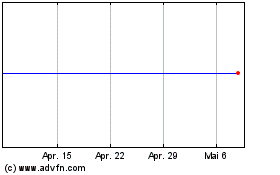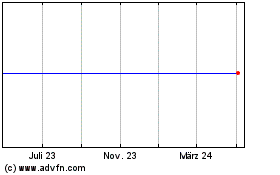FORM 6-K
SECURITIES
AND EXCHANGE COMMISSION
Washington,
D.C. 20549
Report
of Foreign Issuer
Pursuant
to Rule 13a-16 or 15d-16 of
the
Securities Exchange Act of 1934
For the
month of May 2022
Commission
File Number: 001-11960
AstraZeneca PLC
1
Francis Crick Avenue
Cambridge
Biomedical Campus
Cambridge
CB2 0AA
United
Kingdom
Indicate
by check mark whether the registrant files or will file annual
reports under cover of Form 20-F or Form 40-F.
Form
20-F X Form 40-F __
Indicate
by check mark if the registrant is submitting the Form 6-K in paper
as permitted by Regulation S-T Rule 101(b)(1):
Indicate
by check mark if the registrant is submitting the Form 6-K in paper
as permitted by Regulation S-T Rule 101(b)(7): ______
Indicate
by check mark whether the registrant by furnishing the information
contained in this Form is also thereby furnishing the information
to the Commission pursuant to Rule 12g3-2(b) under the Securities
Exchange Act of 1934.
Yes __
No X
If
“Yes” is marked, indicate below the file number
assigned to the Registrant in connection with Rule 12g3-2(b):
82-_____________
AstraZeneca PLC
INDEX
TO EXHIBITS
1.
Ultomiris NMOSD Ph. III trial met primary endpoint
5 May 2022 07:00 BST
Ultomiris met primary endpoint in
CHAMPION-NMOSD Phase III trial in adults with neuromyelitis optica
spectrum disorder
Zero adjudicated relapses observed among Ultomiris patients over a
median treatment duration of 73 weeks
Positive high-level results from the open-label Phase III
CHAMPION-NMOSD trial showed that Ultomiris (ravulizumab-cwvz) achieved a statistically
significant and clinically meaningful reduction in the risk of
relapse in adults with anti-aquaporin-4 (AQP4)
antibody-positive (Ab+) neuromyelitis optica spectrum disorder
(NMOSD) compared to the external placebo arm from the
pivotal Soliris PREVENT clinical trial.
Ultomiris, the first and only long-acting C5 complement
inhibitor, met the primary endpoint of time to first on-trial
relapse, as confirmed by an independent adjudication committee.
Notably, no relapse was observed in 58 patients over a median
treatment duration of 73 weeks.
NMOSD is a rare and devastating autoimmune disease that affects the
central nervous system (CNS), including the spine and optic
nerves.1-3 Most
people living with NMOSD often experience unpredictable relapses, a
new onset of neurologic symptoms or worsening of existing
neurologic symptoms, also referred to as attacks, which tend to be
severe and recurrent and may result in permanent
disability.4-6
Sean J. Pittock, MD, Director of Mayo Clinic's Center for Multiple
Sclerosis and Autoimmune Neurology and of Mayo's Neuroimmunology
Laboratory and lead primary investigator in the CHAMPION-NMOSD
trial, said: "Every NMOSD relapse can have debilitating and
irreversible consequences, so reducing relapses is critical.
Patients on Ultomiris remained relapse free over a median
treatment duration of 73 weeks in the trial."
Marc Dunoyer, Chief Executive Officer, Alexion, said:
"Soliris established the role of complement
inhibition in preventing relapses in NMOSD, and
with Ultomiris, we continue to innovate for patients with a
more convenient every eight-week dosing schedule. These trial
results show that Ultomiris may help patients move towards
eliminating relapses, which is an important advancement in the
treatment of NMOSD."
The safety and tolerability of Ultomiris in the Champion-NMOSD trial were consistent
with previous clinical studies and other approved indications.
Fifty-six patients are continuing to receive treatment in a
long-term extension period, which is ongoing.
The data will be presented at a forthcoming medical meeting and
submitted to global health authorities as rapidly as possible to
bring forward Ultomiris to the NMOSD community.
Notes
NMOSD
NMOSD is a rare disease in which the immune system is
inappropriately activated to target healthy tissues and cells in
the CNS.1,2 Approximately
three-quarters of people with NMOSD are anti-AQP4 Ab+, meaning they
produce antibodies that bind to a specific protein, aquaporin-4
(AQP4).7 This
binding can inappropriately activate the complement
system, which is part of the immune system and is essential to the
body's defence against infection, to destroy cells in the optic
nerve, spinal cord and brain.1,8,9
It most commonly affects women and begins in the mid-30s. Men
and children may also develop NMOSD, but it is even more
rare.10,11 People
with NMOSD may experience vision problems, intense pain, loss of
bladder/bowel function, abnormal skin sensations (eg, tingling,
prickling or sensitivity to heat/cold) and impact on coordination
and/or movement.3-5,12,13 Most
people living with NMOSD experience unpredictable relapses, also
known as attacks. Each relapse can result in cumulative disability
including vision loss, paralysis and sometimes premature
death.4-6 NMOSD
is a distinct disease from other CNS diseases, including multiple
sclerosis. The journey to diagnosis can be long, with the disease
sometimes misdiagnosed.14-16
CHAMPION-NMOSD
CHAMPION-NMOSD is a global Phase III, open-label, multicentre trial
evaluating the safety and efficacy of Ultomiris in adults with NMOSD. The trial enrolled 58
patients across North America, Europe, Asia-Pacific and Japan.
Participants were required to have a confirmed NMOSD diagnosis with
a positive anti-AQP4 antibody test, at least one attack or relapse
in the twelve months prior to the screening visit, an Expanded
Disability Status Scale Score of 7 or less and body weight of at
least 40 kilograms at trial entry. Participants could stay on
stable supportive immunosuppressive therapy for the duration of the
trial.17
Due to the potential long-term functional impact of NMOSD relapses,
a direct placebo comparator arm was precluded for ethical reasons.
The active treatment was compared to an external placebo arm from
the pivotal Soliris PREVENT clinical trial.
Over a median treatment duration of 73 weeks, all enrolled patients
received a single weight-based loading dose
of Ultomiris on Day 1, followed by regular weight-based
maintenance dosing beginning on Day 15, every eight weeks. The
primary endpoint was time to first on-trial relapse, as confirmed
by an independent adjudication committee. The end of the primary
treatment period could have occurred either when all patients
completed or discontinued prior to the Week 26 visit and two or
more adjudicated relapses were observed, or when all patients
completed or discontinued prior to the Week 50 visit if fewer than
two adjudicated relapses were observed. In the trial, there
were zero adjudicated relapses so the end of the primary treatment
period occurred when the last enrolled participant completed the 50
week visit.
Patients who completed the primary treatment period were eligible
to continue into a long-term extension period, which is
ongoing.
Ultomiris
Ultomiris (ravulizumab-cwvz), the first and only long-acting
C5 complement inhibitor, offers immediate, complete and sustained
complement inhibition. The medication works by inhibiting the C5
protein in the terminal complement cascade, a part of the body's
immune system. When activated in an uncontrolled manner, the
complement cascade over-responds, leading the body to attack its
own healthy cells. Ultomiris is administered intravenously every eight
weeks in adult patients, following a loading
dose.
Ultomiris is approved in
the US for the treatment of certain adults with generalised
myasthenia gravis.
Ultomiris is also approved
in the US, EU and Japan for the treatment of certain adults and
children with paroxysmal nocturnal
haemoglobinuria.
Additionally, Ultomiris is approved in the US, EU and Japan for
certain adults and children with atypical haemolytic uraemic
syndrome to inhibit complement-mediated thrombotic
microangiopathy.
As part of a broad development programme, Ultomiris is being assessed for the treatment of
additional haematology and neurology
indications.
Alexion
Alexion, AstraZeneca Rare Disease, is the group within AstraZeneca
focused on rare diseases, created following the 2021 acquisition of
Alexion Pharmaceuticals, Inc. As a leader in rare diseases for
nearly 30 years, Alexion is focused on serving patients and
families affected by rare diseases and devastating conditions
through the discovery, development and commercialisation of
life-changing medicines. Alexion focuses its research efforts on
novel molecules and targets in the complement cascade and its
development efforts on haematology, nephrology, neurology,
metabolic disorders, cardiology and ophthalmology. Headquartered in
Boston, Massachusetts, Alexion has offices around the globe and
serves patients in more than 50 countries.
AstraZeneca
AstraZeneca (LSE/STO/Nasdaq: AZN) is a global, science-led
biopharmaceutical company that focuses on the discovery,
development, and commercialisation of prescription medicines in
Oncology, Rare Diseases, and BioPharmaceuticals, including
Cardiovascular, Renal & Metabolism, and Respiratory &
Immunology. Based in Cambridge, UK, AstraZeneca operates in over
100 countries and its innovative medicines are used by millions of
patients worldwide. Please visit astrazeneca.com and
follow the Company on Twitter @AstraZeneca.
Contacts
For details on how to contact the Investor Relations Team, please
click here.
For Media contacts, click here.
References
1.
Wingerchuk DM, Lennon VA, Lucchinetti CF, Pittock SJ, Weinshenker
BG. The spectrum of neuromyelitis optica. Lancet Neurol.
2007;6(9):805-815.
2.
Wingerchuk DM. Diagnosis and treatment of neuromyelitis
optica. Neurologist. 2007;13(1):2-11.
3.
Hamid SHM, Whittam D, Mutch K et al. What proportion of
AQP4-IgG-negative NMO spectrum disorder patients are MOG-IgG
positive? A cross sectional study of 132 patients. J Neurol.
2017;264(10):2088-2094.
4.
Wingerchuk DM, Weinshenker BG. Neuromyelitis optica. Curr
Treat Options Neurol. 2008;10(1):55-66.
5. Kitley
J, Leite MI, Nakashima I, et al. Prognostic factors and
disease course in aquaporin-4 antibody-positive patients with
neuromyelitis optica spectrum disorder from the United Kingdom and
Japan. Brain. 2012;135(6):1834-1849.
6.
Jarius S, Ruprecht K, Wildemann B, et al. Contrasting disease
patterns in seropositive and seronegative neuromyelitis optica: a
multicentre study of 175 patients. J Neuroinflamm.
2012;9:14.
7.
Wingerchuk DM, Hogancamp WF, O'Brien PC, Weinshenker BG. The
clinical course of neuromyelitis optica (Devic's syndrome).
Neurology. 1999;53(5):1107-1114.
8.
Papadopoulos MC, Bennett JL, Verkman AS. Treatment of neuromyelitis
optica: state-of-the-art and emerging therapies. Nat Rev Neurol.
2014;10(9):493.
9.
Cossburn, M., et al. (2012). The Prevalence of Neuromyelitis Optica
in South East Wales." Eur J Neurol., 19(4): 655-659.
10.
Takata K, Matsuzaki T, Tajika Y. Aquaporins: water channel proteins
of the cell membrane. Prog Histochem Cytochem.
2004;39(1):1-83.
11.
Mori M, Kuwabara S, Paul F. Worldwide prevalence of neuromyelitis
optica spectrum disorders. J Neurol Neurosurg Psychiatry. 2018
Jun;89(6):555-556. doi: 10.1136/jnnp-2017-317566. Epub 2018 Feb 7.
PMID: 29436488.
12. Quek
AML, Mckeon A, Lennon VA et al. Effects of age and sex on
aquaporin-4 autoimmunity. Arch Neurol 2012 and
69:1039-43.
13.
Tüzün E, Kürtüncü M, Türkoğlu R,
et al. Enhanced complement consumption in neuromyelitis optica and
Behcet's disease patients. J Neuroimmunol.
2011;233(1-2):211-215.
14. Kuroda
H, Fujihara K, Takano R, et al. Increase of complement
fragment C5a in cerebrospinal fluid during exacerbation of
neuromyelitis optica. J Neuroimmunol.
2013;254(1-2):178-182.
15.
Jarius, S., Wildemann, B. (2013). The History of Neuromyelitis
Optica. J Neuroinflammation 10, 797.
16. Mealy,
M. A., et al. (2019). Assessment of Patients with
Neuromyelitis Optica Spectrum Disorder Using the EQ-5D.
International journal of MS care, 21(3), 129-134.
17.
ClinicalTrials.gov. An Efficacy and Safety Study of Ravulizumab in
Adult Participants With NMOSD. NCT Identifier: NCT04201262.
Available online. Accessed April 2022.
Dr.
Pittock has provided consulting services to Alexion.
Adrian Kemp
Company Secretary
AstraZeneca PLC
SIGNATURES
Pursuant
to the requirements of the Securities Exchange Act of 1934, the
Registrant has duly caused this report to be signed on its behalf
by the undersigned, thereunto duly authorized.
Date:
05 May 2022
|
|
By: /s/
Adrian Kemp
|
|
|
Name:
Adrian Kemp
|
|
|
Title:
Company Secretary
|
AstraZeneca (NYSE:AZN)
Historical Stock Chart
Von Mär 2024 bis Apr 2024

AstraZeneca (NYSE:AZN)
Historical Stock Chart
Von Apr 2023 bis Apr 2024
